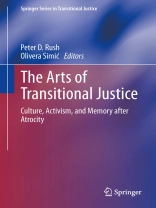The Art of Transitional Justice examines the relationship between transitional justice and the practices of art associated with it. Art, which includes theater, literature, photography, and film, has been integral to the understanding of the issues faced in situations of transitional justice as well as other issues arising out of conflict and mass atrocity. The chapters in this volume take up this understanding and its demands of transitional justice in situations in several countries: Afghanistan, Serbia, Srebenica, Rwanda, Northern Ireland, Cambodia, as well as the experiences of resulting diasporic communities. In doing so, it brings to bear the insights from scholars, civil society groups, and art practitioners, as well as interdisciplinary collaborations.
Mục lục
The Demands of Art in Transitional Justice Processes.- Dispersed Memories: Diaspora, Reconciliation and Healing.- Activism, Public Debate and Temporal Complexities in Fighting for Transitional Justice in Serbia.- Aesthetic Approaches to Justice: Addressing Jedwabne.- Theatre and Justice: A Grassroots Approach to Transitional Justice in Afghanistan.- You are allowed (to be alive!) How art can give permission.- The Visions of Literary Justice for Survivors of Srebrenica: Examining the Fictional Narratives of Srebrenica Genocide in Light of the Insights from Transitional Justice.- Frames of Genocide: Between performativity and aesthetics, memorials and archives in the Transitional Justice Process in Rwanda.- The Artistic Imaginary and Transitional Justice in Northern Ireland.- The Staging of History in Cambodia.- On the Transformation of Wounds: Pictures as an engine of justice.- Memorial Culture in the former Yugoslavia: The Mothers of Srebenica and the destruction of artefacts by the ICTY.- The plural jurisdictions of transitional aesthetics: bearing witness in liminal spaces.












